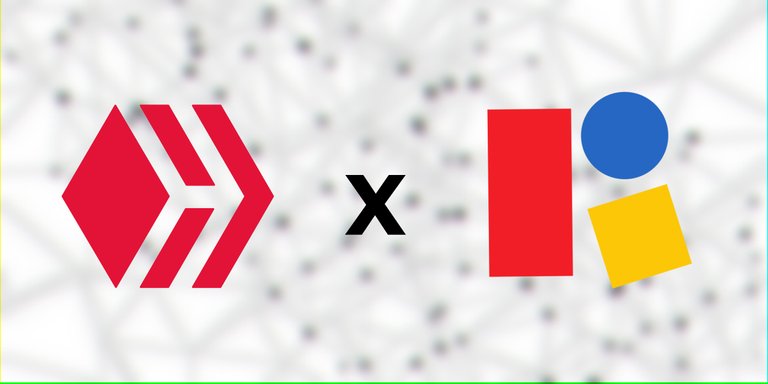When it comes to open-source projects and communities, development never stops. It may slow down, effort and manpower might get scattershot and unfocused, but the ace in the hole in comparison to closed-source equivalents is that the machine is always turning, no matter the state of the oil circulating.

This sentiment is particularly amplified in the case of Hive and its development sphere. Whilst HAF is a big step towards opening up the floodgates for developers notwithstanding of their respective coding language, it still left much to be desired on one single account hindering widespread adoption: Blockchain integration.
Rosetta and Interoperability
Because of its unique account setup, its RC-dependent mechanism in interactions and social-media nature, HIVE cannot be reliably standardized and bridged with other blockchains without compromising on those aforementioned features, either on our side in the form of a complete overhaul, or on the other's through simply omitting them. Another all-encompassing standard of integration is needed.
Now, blockchain integration and interoperability is a paramount subject of development for the team involved, especially considering the amount of coordination it takes with the targeted blockchain's team build a bridge with and the herculean number of discrepancies to iron out in a standardized way. Such collaborations, before the DeFi explosion, were exclusive to the especially successful blockchains along with their layer 2 applications, and are generally regarded as the highest milestone of maturation a blockchain can achieve.
The Rosetta API makes short work of all of this, and while this particular standardized bridge is only used for the purpose of getting listed on Coinbase, it could make for a great interoperable foundation. Perhaps Harmony's blockchain is something to aim for, with their easily integratable Still though, even when standardized, a great deal has to be done in order to make HIVE a much more interfaceable chain, especially as smart contract transactions are geared to hog a remarkable portion of our RCs.
While the technical aspect of an interoperable blockchain is a mountain on its own, the economical benefits are much bigger. In its current form, HIVE, along with its layer 2 applications, is way too balkanized of a blockchain as compared to the others, with no way for liquidity to enter our field of vision, except for the HBD-BUSD pair proposed a while ago stabilizing HBD's value. Once the doors are open, all aspects of HIVE become prone to outside effectors.
One example of such an effector, and probably the most interesting one, is changes in liquidity and its impact on HIVE's price, which has remained unusually steadfast around the $0.45-$0.60 range. When cross-referenced with the top 10, HIVE in comparison has held its ground pretty reliably on accounts of not its liquidity, which doesn't even come close to the like of Bitcoin, but because this liquidity has nowhere to go in case of the market dissolving at large. By that token, HIVE wouldn't respond as strongly in case of a market uproar.
This might seem either good or bad depending on where you stand, a diluted response to the markets crabbing is certainly a desirable outcome. But a stagnant liquidity is much more prone to manipulation and spontaneous ebbs and flows. The 'Koreans' are a prime example taking advantage of this fact, injecting tons of volume within the day and hiking the price up.
When HIVE eventually becomes interoperable, liquidity is going to flood on, and HIVE's price and valuation is going to experience much more aggressive movements than before, in addition to diluting any one's ability to impact.
While this all sounds great, this isn't what interoperability is really about. From a purely technical viewpoint, external wallet integration is going to become quite a hot-topic as the desire for centralization heightens. Through wallet integrations, transactions and JSON operations, even AccountIdentifier-specific operations, could be deployed outside the blockchain through a universal interface.
This is huge. This probably wouldn't mean much to the HIVE maximalist, but to the people whose crypto presence extends way outside Hive's boundaries, and particularly into other layer 2 solutions, this is a major time-saver. Deploying multi-chain transactions through one single consolidated interface is not to be underestimated, and Rosetta makes this possible.
Conclusion
Presently, a Rosetta integration is geared for implementation in the next hard fork, but may be pushed back given the monumentality behind it. A coinbase listing is all what Rosetta may seem to be only good for, but it just may be the bridge we really needed all along in order to onboard users and developers alike.
Posted Using LeoFinance Beta
The rewards earned on this comment will go directly to the people( @taskmaster4450le ) sharing the post on Twitter as long as they are registered with @poshtoken. Sign up at https://hiveposh.com.
Congratulations @leonordomonol! You have completed the following achievement on the Hive blockchain and have been rewarded with new badge(s):
Your next target is to reach 60 posts.
You can view your badges on your board and compare yourself to others in the Ranking
If you no longer want to receive notifications, reply to this comment with the word
STOPTo support your work, I also upvoted your post!
Check out the last post from @hivebuzz:
Support the HiveBuzz project. Vote for our proposal!